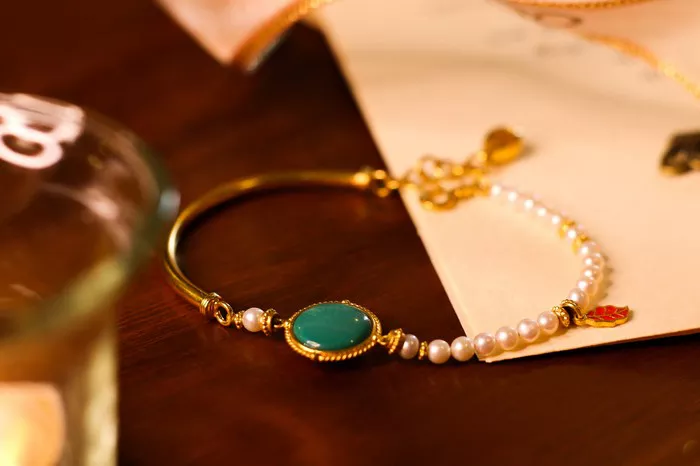Choosing a gemstone for your ring can be exciting but overwhelming. Two popular choices are Amethyst and Turquoise. Both stones have unique beauty and history, making them excellent options. In this article, we will explore their properties, meanings, styles, and care to help you make the ultimate decision.
What is Amethyst?
Amethyst is a purple variety of quartz. It is known for its stunning color, which ranges from light lavender to deep violet. This gemstone has been cherished for centuries. Ancient Egyptians, Greeks, and Romans all valued Amethyst for its beauty and believed it held protective qualities.
Properties of Amethyst
Color: Amethyst is famous for its vibrant purple hues. The intensity of the color can affect its value. Darker stones are often more sought after.
Hardness: On the Mohs scale, Amethyst has a hardness of 7. This means it is relatively durable, making it suitable for everyday wear.
Clarity: High-quality Amethyst should be transparent, with few inclusions. The more flawless the stone, the higher its value.
Meaning of Amethyst
Amethyst is often associated with peace, balance, and courage. It is believed to promote calmness and help with stress relief. Many people wear Amethyst to enhance their intuition and protect against negative energy.
What is Turquoise?
Turquoise is a blue-to-green mineral often found in arid regions. It has a unique appearance, characterized by its vivid color and matrix patterns. This stone has been used in jewelry for thousands of years by various cultures, including Native Americans and ancient Egyptians.
Properties of Turquoise
Color: Turquoise is celebrated for its bright blue and green shades. The color can vary due to the presence of copper and iron in its composition.
Hardness: On the Mohs scale, Turquoise is softer, ranging from 5 to 6. This makes it more susceptible to scratching compared to Amethyst.
Clarity: Turquoise often contains matrix patterns, which can enhance its beauty. The presence of these patterns can affect the stone’s value.
Meaning of Turquoise
Turquoise symbolizes healing, protection, and friendship. It is often worn as a talisman for good luck and is believed to foster honest communication. Many cultures regard Turquoise as a sacred stone, often used in rituals and ceremonies.
Comparing Amethyst and Turquoise
When choosing between Amethyst and Turquoise, consider several factors:
1. Color and Aesthetics
Both stones offer stunning colors, but they appeal to different tastes. Amethyst’s purple hues are striking and elegant, while Turquoise provides a vibrant, earthy feel. Consider what color resonates with you and complements your style.
2. Durability
Amethyst is generally more durable than Turquoise. If you plan to wear your ring daily, Amethyst may be the better choice. However, if you prefer a statement piece for special occasions, Turquoise can shine beautifully.
3. Price
The price of gemstones can vary widely based on quality and market demand. Generally, Amethyst is more affordable, while high-quality Turquoise can be more expensive, especially if it comes from renowned mines.
4. Setting Styles
Both gemstones can be set in various styles, from classic solitaires to modern designs. Amethyst looks great in both white and yellow gold, enhancing its purple tones. Turquoise pairs beautifully with silver and can be found in Southwestern-style jewelry.
5. Cultural Significance
Consider the cultural meanings behind each stone. If you feel a connection to the history and symbolism of a gemstone, it can enhance your emotional bond with it. Amethyst is often linked to spirituality, while Turquoise is seen as a protective stone.
See Also: What Does Zuni Turquoise Mean?
Caring for Your Gemstone Ring
To keep your ring looking beautiful, proper care is essential.
Caring for Amethyst
Cleaning: Clean Amethyst with mild soap and water. Avoid harsh chemicals that can damage the stone.
Storage: Store your Amethyst ring in a soft pouch or jewelry box to prevent scratches.
Avoid Heat: Keep Amethyst away from extreme heat, as it can affect its color.
Caring for Turquoise
Cleaning: Clean Turquoise with a soft, damp cloth. Avoid soaking it in water, as it can absorb moisture and damage the stone.
Storage: Store your Turquoise ring separately to avoid scratches. Use a soft cloth to wrap it.
Avoid Chemicals: Keep Turquoise away from perfumes, lotions, and cleaning products, as they can alter its appearance.
Conclusion
Both Amethyst and Turquoise have unique properties and beauty, making them popular choices for rings. If you value durability and a classic look, Amethyst may be the ultimate choice for you. On the other hand, if you are drawn to vibrant colors and cultural significance, Turquoise might be your gemstone.
Ultimately, the best choice is the one that resonates with you personally. Consider your style, how you plan to wear the ring, and what each gemstone represents to you. Whichever you choose, both Amethyst and Turquoise can make a stunning statement in any ring.
Related topics:
- Spider Web Turquoise Rings: Price Ranges and What to Expect
- The History Behind Purple Copper Turquoise Rings
- What is a Carat of Turquoise?


